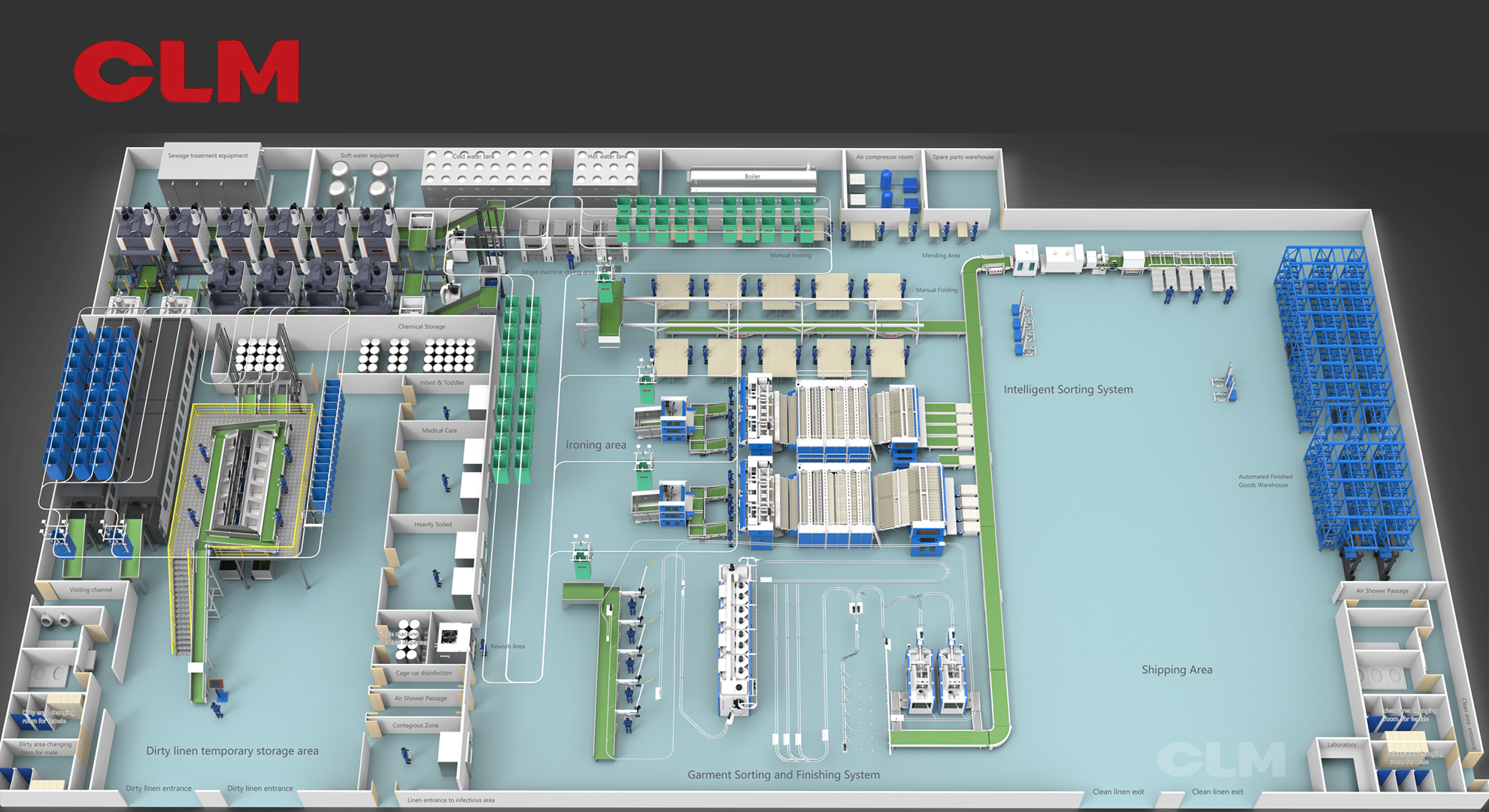In a hospital, laundry is an important component of the infection prevention infrastructure. Behind every clean bedding and disinfected surgical sheet, there is a hidden system. If it is not planned or maintained correctly, it will directly affect the treatment effect of the patients.
An ideal medical laundry not only can provide clean linen but also ensure the safety of the patients and protect the employees, which supports the clinical operations of medical institutions. This article shares some key points that need to be paid attention to and avoided when people design and operate the medical laundry plant.
Main Purpose of Medical Washing
The main aim of the medical laundry is to prevent cross-contamination between the soiled linen and clean linen. It eliminates pathogens through disinfection and maintains a stable and effective supply of fresh linen to all departments, from operating rooms to general wards.
To achieve this goal, people need to carefully plan the layout, choose equipment, make infection control solutions, and hold employee training. Every section must be coordinated so that it can both meet the hygienic standard and the operational efficiency.
Ideal Medical Laundry Planning
❑ Isolation and workflow design
● Physical isolation: Design the washing room as a separate area for storing dirty and clean clothes to ensure a one-way workflow and prevent cross-contamination.
● Negative air flow: Apply negative pressure in contaminated areas to prevent pathogens in the air from moving to clean areas.
● Clear marks: Make clear labels and color coding for the boxes, carts, and storage rooms to avoid the clean linen accidentally mixing with the soiled linen.
❑ Infection Control Measures
● High-temperature cleaning
The equipment must be capable of achieving and maintaining a programmable time of 80℃ to comply with the disinfection protocols recommended by HICC, MoHFW, or any other regulatory agency.
● Suitable detergents
Use suitable detergents and disinfectants that are compatible with medical textiles.
● Special treatment
Make a separate treatment and cleaning process for the linen and high-risk areas. (ICU, OT, isolation wards)
❑ Storage and Treatment
● Covered storage
Store clean linen in a closed/covered, safe, and restricted-access area to prevent contamination.
● Special Transportation
Use separate trash cans and trolleys with clear marks to store dirty and clean linen. Trash cans, trolleys, and containers must be cleaned and disinfected after use.
● Personnel hygiene
Staff who handle dirty and clean linen must strictly adhere to hygiene regulations.
❑ Equipment and Skills
● Industrial equipment
Invest in barrier washers, which are programmable and especially designed for medical care requirements, energy-saving washing machines, and dryers.
● Automation
Use an automatic dispenser system to distribute detergents and chemicals. Use advanced equipment that can provide real-time data to monitor the process protocol on a remote computer. An inventory system based on RFID can help people track and improve efficiency and consistency.
● Regular maintenance
Regular preventive maintenance and inspection help avoid malfunctions and ensure optimal operational efficiency.
● Employee training and personnel safety
Personnel who handle infected linen must be vaccinated appropriately and wear protective equipment when handling the linen.
Personnel who handle contaminated linen must wear protective garments and masks.
● Training
Provide regular training and further education on hygiene procedures, personnel safety, infection control, material handling, equipment usage, emergency procedures, and regulatory compliance.
❑ Quality Control and Monitoring
● Routine check
Check the cleanliness and integrity of the linen before distribution.
● Performance monitoring
Track turnaround time, infection rate, and linen loss to optimize operations.
● Feedback
Encourage the clinical staff to report quality issues of linen for continuous improvement.
❑ Environment and Compliance
● Water and energy efficiency
Choose equipment that allows for flexible programming and process control to reduce resource consumption as much as possible.
● Waste management
Handle the infected or contaminated materials according to the regulations of the supervision guidance.
● File
Keep the records of linen processing, washing circles, the use of detergents, and the preventative maintenance to help easily track and audit.
Practice and Attention
❑ Best Practices and Other Notes
● Linen quality
Choose durable and high-quality textiles that can withstand the repeated high-temperature washing process.
● Productivity Planning
Analyze the current and projected condition of linen.
Reasonably regulate the equipment and personnel requirements.
Make full use of the automation and technological advantages.
● Flexible operation
Design the layout, workflow, and processes for emergency or additional requirements.
● Continuous adjustments
Regularly check the SOP, infection rate, and update protocol with the development of standards.
Conclusion
The key points of ideal healthcare laundry are infection control, operating efficiency, and compliance. The key planning factors include strict division between linens, disinfection, sealed storage, employee training, and use of industrial equipment. The operations that have risks of cross-contamination and hygienic hazards, or violate safety operations, should be avoided. If healthcare laundry plants follow the above principles, they can ensure a reliable supply of clean and hygienic linen so as to support the care of patients and maintain their reputations.
Post time: Sep-10-2025


